Arabba is an alpine destination nestled in the Venetian Dolomites in the province of Belluno.
Surrounded by some of the most imposing and legendary peaks of the Sella and Marmolada ranges, Arabba is a "true mountain destination" and a paradise for nature lovers and outdoor enthusiasts.
In all seasons, this resort is a privileged starting point for exploring the surrounding wonders in a sustainable way, enjoying winter sports in Italy's largest ski area, relaxing and recharging your batteries surrounded by breathtaking views.
Arabba offers a mix of sport, nature, culture and history, making your trip a complete and fulfilling experience. Let's discover together the scenic and cultural attractions of this charming village in the Dolomites!

Arabba, a jewel in the centre of the Dolomites
Located in the beautiful Fodom Valley, Arabba is a hamlet in the Belluno municipality of Livinallongo del Col di Lana.
It lies at an altitude of 1,600 metres in a basin at the foot of the Pordoi and Campolongo passes, nestled between the Sella Massif and a short distance from the Marmolada group.
Arabba is a very popular tourist resort in the Dolomites, a UNESCO World Heritage Site, and is home to the largest number of accommodation facilities in the Fodom Valley.
In particular, Arabba, together with the Fodom Valley and the other valleys around the Sella Massif, form the Sellaronda or Four Passes Tour, the most popular ski tour in the Dolomiti Superski, Italy's largest ski area.
In winter, Arabba, with its countless snow-covered slopes, is the ideal destination for skiers and snowboarders, but outdoor activities are not limited to skiing.
In all seasons, visitors will find many alternatives to enjoy the mountains to the fullest, including hiking, climbing, mountain biking and much more.
Arabba is charming and welcoming, and preserves historic buildings of great cultural interest such as the ancient church, the old mill, Andraz Castle and the Ladin Fodom Museum.
Furthermore, in the vicinity of Arabba, history enthusiasts can visit Col di Lana, the areas of Passo Falzarego and Valparola, the Military Memorial at Passo Pordoi and the Salesei Memorial, places and monuments of great emotional significance that were the scene of battles during the First World War.
Arabba is a lively resort and is animated by cultural events and traditional festivals. Between one activity and another, there will be plenty of opportunities to taste the delicious local dishes such as canederli, goulash with polenta and many other delicacies.
All that remains is to discover what to do and see in Arabba, an oasis of peace where every corner offers unforgettable landscapes.
Discover more about ArabbaListen to the podcast version of the article with the voice of Monna Lisa & Leonardo
The history of Arabba and the Fodom Valley
To tell the story of this area, we must first remember that the municipality of Livinallongo del Col di Lana, of which Arabba is part, is one of the municipalities included in the five Ladin valleys located in the Dolomites, between the provinces of Trento, Bolzano and Belluno.
Arabba and the entire Fodom Valley therefore have a unique cultural characteristic compared to other towns in the Belluno Dolomites: until the end of the First World War, this area (together with the nearby municipality of Colle Santa Lucia) was part of the Austro-Hungarian Empire, like Trentino and South Tyrol.
The Fodom Valley and Arabba (Reba in Ladin) have a very ancient history that begins with the presence of the “Salvans” and “Ganes” in the valley.
The Salvans, wild men similar to bears, and the Ganes, female creatures, are legendary figures in Ladin tradition. In ancient times, the population of the Fodom Valley used the Arabba territory for grazing, timber and agriculture.
Historical sources tell us that in this territory owned by the House of Austria, Andraz Castle was built around the year 1000 to defend the southern border of Tyrol.
The manor then became the residence of the Prince-Bishops of Bressanone.
The events of the Great War
A very important aspect in the development of the Ladin valleys was the construction of the 48 Great Dolomite Road between 1901 and 1909.
The road runs through the Dolomite area from Bolzano to Cortina D'Ampezzo, passing through the Costalunga Pass, the Pordoi Pass and the Falzarego Pass.
This important infrastructure also led to the construction of the first simple accommodation facilities along the entire route.
Later, the great economic boom of the 1960s led to the construction of the first ski lifts and hotels in the Arabba basin, contributing to the development of the local economy.
At the outbreak of the First World War (1915 for the Kingdom of Italy), Arabba found itself right on the front line of the Dolomites.
On Col Di Lana, a mountain that played a strategic role in controlling the territory due to its central position, fierce fighting took place for months, and even today, monuments, fortifications and military shrines can be visited, bearing witness to a terrible historical event for humanity.
Post-war reconstruction began in 1918 when survivors returned to the valley and started rebuilding, initially living in the barracks left behind by the military and in the few houses that had escaped the bombing.
A stroll through the tourist centre of Arabba
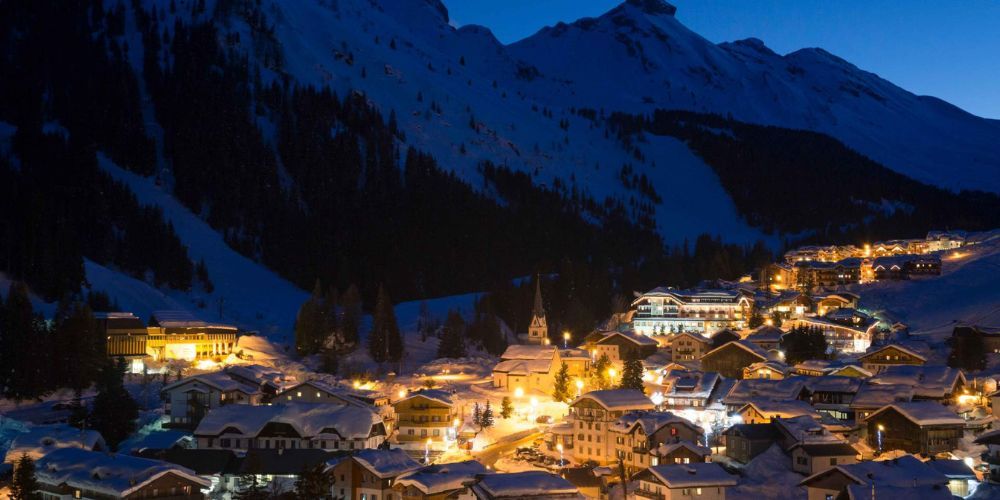
The touristic centre of Arabba is a little gem surrounded by the peaks of the Dolomites.
Strolling through its narrow cobbled streets, you will come across wooden houses with flower-filled balconies, in typical Ladin style. The Ladin style and the mountain environment blend perfectly, bringing to mind ancient local traditions.
Among the buildings, the striking Gothic church dedicated to Saints Peter and Paul stands out.
The church and its bell tower miraculously escaped damage during the First World War and houses important murals dating back to the early 1900s.
Along the stream that runs through the village is the Old Mill, a structure of great importance to the ancient local economy.
Arabba is welcoming and peaceful, and its small shops and restaurants, mostly family-run, offer typical products and traditional dishes.
Arabba is a place where you can breathe in the authentic soul of the Dolomites!
What to see in Arabba-Fodom: Andraz Castle
About a 30-minute drive from the centre of Arabba is Andraz Castle, an important cultural attraction and symbol of the Fodom Valley. Built around the year 1000, it stands on a rocky spur and dominates the entire valley.
Due to its geographical position, it has played a crucial role in military and commercial affairs throughout history.
From 1416 to 1802, it was owned by the Bishops of Bressanone and underwent many structural changes over the years.
Between 1986 and 2002, it was renovated and pedestrian walkways were built inside, allowing visitors to explore the interior.
The castle houses the Andraz Castle Museum, an exhibition space dedicated to the historical events that involved the fortress and the surrounding area. The museum aims to preserve local history and traditions.
The castle is open from June to October, with different opening hours depending on the month. Guided tours and audio guides are available.
Andraz Castle is an impressive building, surrounded by a fabulous landscape.
Niccolò Cusano and Andraz Castle
Andraz Castle was home to an illustrious man: the great theologian, mathematician and philosopher Niccolò Cusano.
Born in Germany in 1401, Cusano was the first Renaissance philosopher to support a heliocentric view of the universe, hypothesising the motion of the Earth, the orbits of the planets and the relativity of every point of observation.
In 1457, Niccolò Cusano, who was Prince Bishop of Bressanone, went to Andraz Castle where he lived for long periods before his death in Todi in 1464.
An interesting fact: in one wall of the room where he stayed, there is a hole which, according to some scholars, was used by Cusano for astronomical observations and studies.
The old mill of Arabba
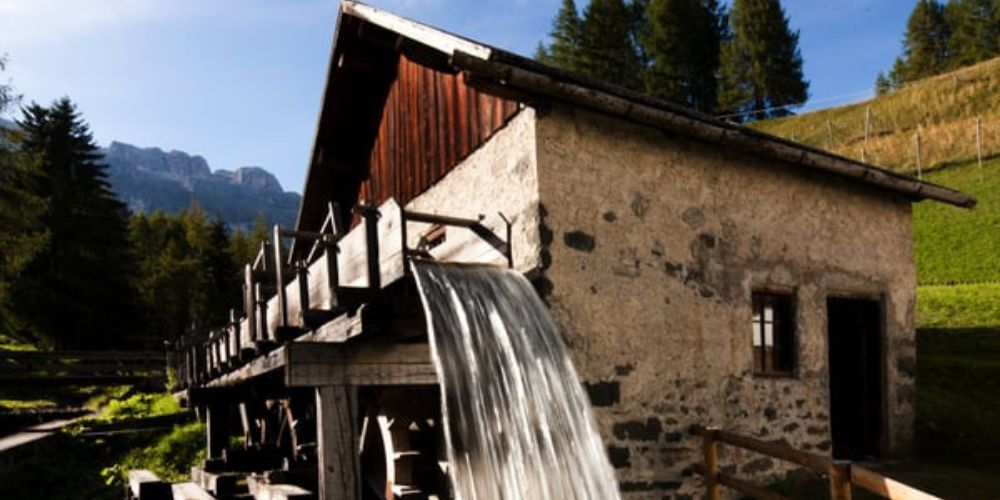
Located along the stream that runs through Arabba, the old mill is undoubtedly a place of memory and a masterpiece of simple mechanics.
The structure dates back to the end of the 19th century and was used by the community until the 1960s to grind rye and barley. Grinding generally took place mainly in spring when the streams have a greater flow of water.
Today, the mill is open to the public for external visits.
Culture and traditions in Arabba: the Ladin Fodom Museum
The Ladin Fodom Museum, or Museum of History, Customs and Traditions of the Ladin People, was inaugurated in 1996 thanks to the efforts of Franco Deltedesco, a school teacher and expert in local culture, and the contribution of numerous local associations and individuals.
The museum tells the story of the valley, from the most ancient archaeological finds to the great events of the modern era (the First and Second World Wars), passing through the ancient history of Andraz Castle and the rule of the Bishops of Bressanone.
The exhibition explores themes related to the environment (flora, fauna, geology of the area) and local culture, with reference to social aspects, typical customs, traditions, rural architecture and the economy.
The aim of the museum is to preserve, document and recount all aspects of the Ladin culture of Fodom, but also to be a point of reference for today's communities, so that they can find useful resources for the future in their roots.
The statue of Tyrolean heroine Katharina Lanz

ph. credit: Arabba Fodom Turismo
In the small square of Pieve di Livinnalongo, a few minutes' drive from Arabba, we find a statue dedicated to Katharina Lanz, a Tyrolean heroine.
Katharina was a patriot who, together with her compatriots, opposed the French occupation of 1797. The Tyroleans managed to repel the French troops, and according to tradition, the young woman drove out the soldiers armed with only a pitchfork.
Thanks to the reconstruction of the facts, her figure became famous in the Ladin valleys and in 1912, a statue dedicated to her was inaugurated, depicting her with a pitchfork in her hand.
A significant but straightforward monument that tells a part of Ladin history and culture.
Arabba and the sites of the First World War
The Col di Lana, due to its position on the border between the Kingdom of Italy and the Austro-Hungarian Empire, was the scene of violent battles during the First World War. The signs of those brutal clashes are still alive and visible.
At the foot of Col di Lana, in the municipality of Livinnalongo del Col di Lana, you can see the remains of Forte la' Corte, an Austro-Hungarian fortress from 1880 used for defensive purposes and to control the road from Livinnalongo to Arabba.
Of significant impact is the large crater caused by the detonation of Col di Lana. In 1916, after the destruction of the village of Pieve di Livinnalongo, the Italian army detonated a mine to conquer Col di Lana. From then on, the war front moved to the Marmolada.
On Col di Lana in 1935, a chapel was erected in memory of all the fallen soldiers of the First World War. The little church can be reached via numerous paths and is a place of peace from which to admire a unique view of the Dolomites.
The Military Memorial Shrines
Among the Great War memorials, Livinnalongo del Col di Lana is also home to two large Military Shrines.
The Pordoi Pass German Military Memorial or Ossuary is located at 2239 m.. It houses the remains of about 9,000 Austro-Hungarian and German soldiers who fell on Col di Lana and its surroundings during the two World Wars.
Construction of the memorial began in the 1930s, during the Nazi era, and was interrupted during the Second World War. Work resumed in the 1950s, and the monument was inaugurated in 1959.
Just above the hamlet of Digonera, at the foot of the Col di Lana, is one of the most important monuments commemorating the First World War in the Dolomites: the Pian di Salesei Military Memorial.
The construction of this shrine began in 1922. The bodies of 704 known fallen soldiers, including Italian and Austro-Hungarian soldiers, rest here.
In this Ossuary, there are also more than 4000 unidentified bodies of soldiers who fell during the fierce battles at Livinnalongo and on the Col di Lana, which has since been described as the Blood Mountain.
Arabba, an outdoor paradise: what to do in winter
Arabba is located in a privileged position, in the heart of the Dolomites and the Dolomiti Superski area, making it a top mountain destination.
The large and renowned Dolomiti Superski ski area, with over 1,250 km of snow-covered slopes and more than 450 modern ski lifts, spans two regions (Veneto and Trentino-Alto Adige) and three provinces (Belluno, Trento and Bolzano), helping to make Arabba the ideal destination for ski lovers.
Furthermore, Arabba offers easy access to the Sellaronda or Four Passes Ski Tour, the Marmolada ski tour and also the evocative Great War Tour or Gebirgsjäger-Skitour.
In Arabba, you will find slopes for expert skiers and speed lovers, but also trails for beginners. The Arabba-Marmolada ski area also offers ski schools supervised by qualified ski and snowboard instructors.
The Sellaronda Ski Tour or Four Passes Tour
As mentioned above, Arabba provides direct access to the famous Sellaronda ski tour or Four Passes Tour, one of the most spectacular ski tours in the world.
More than 40 km of ski slopes connect four of the Ladin valleys surrounding the Sella Massif (Valle di Fodom, Alta Badia, Val Gardena and Val di Fassa), via the Dolomite passes of Pordoi, Campolongo, Gardena and Sella.
It is advisable to devote a whole day to the Sellaronda. The time it takes to complete the tour depends greatly on each person's fitness level and how many stops are made along the way.
This ski tour is open at a specific time of year, generally from December to April, and is suitable for intermediate skiers who can tackle red slopes.
It is essential to always check the closing times of the lifts, and it is advisable to be at the last pass by 3.30 p.m. to finish the tour before the lifts close.
The wonderful nature and breathtaking views of the peaks of the UNESCO Dolomites make this tour a unique experience.
Sport and history: the Great War ski tour
The Great War 1915-18 ski tour is an exciting circular route of historical and scenic interest that winds through several valleys and ski areas of the Dolomiti Superki, between the provinces of Belluno and Bolzano.
This route, which touches on the battle sites of the First World War in the Dolomites, allows you to see the remains of trenches and firing positions, and passes close to Col di Lana, the mountain that symbolises the conflict.
The complete tour takes 6 to 8 hours and is recommended for intermediate to advanced skiers.
The tour offers splendid views of some of the peaks of the Dolomites, such as Mount Civetta, Pelmo, Sella, Marmolada and Lagazuoi.
The Great War Tour is an exciting journey through the landscapes and history of the Dolomites.
Arabba: sports and outdoor activities in the Dolomites
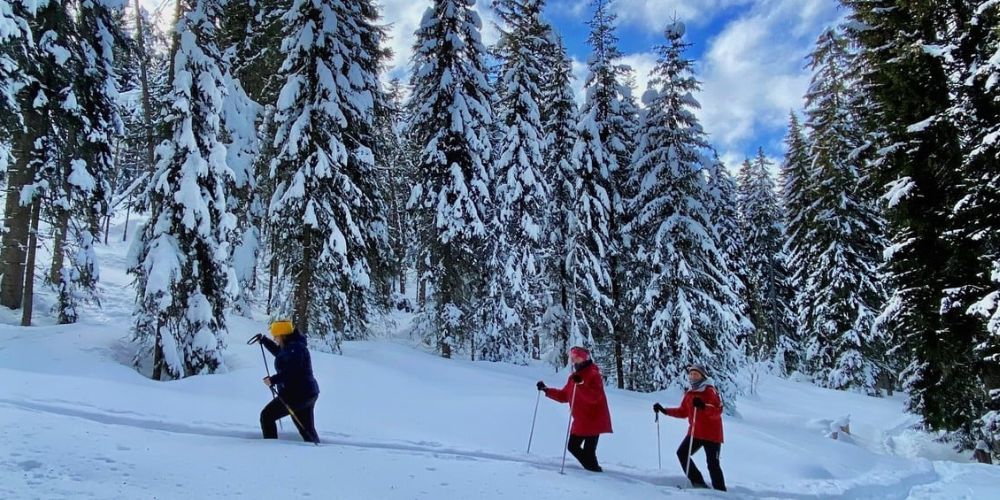
ph. credit: Arraba Fodom Turismo
Arabba is not just about skiing. This tourist resort offers its visitors a wide range of outdoor activities and winter sports.
For those looking for different experiences, snowshoeing is a delightful way to explore unspoilt nature, with trails suitable for everyone.
If you are adventurous, you can try ski mountaineering and freeriding, perhaps in the company of a local mountain guide, who will take you on a safe journey of discovery through the area.
In addition, there is no shortage of opportunities for winter trekking, with trails that wind through snow-covered landscapes and offer spectacular views of the Dolomites, making your holiday a truly all-round experience.
What to do in Arabba in summer: walks and hiking trails
Arabba is a destination to be discovered all year round. Even in summer, the ski lifts are in operation, allowing you to explore and easily reach the beautiful Dolomites.
To get around easily on foot or by mountain-bike, you can purchase the Dolomiti Super Summer Card, which gives you access to more than100 ski lifts in the Dolomites, even in summer.
Summer and the shoulder seasons are ideal for trekking and walking. The Arabba area has plenty of trails suitable for everyone.
You can choose easy trails, such as the Sentiero panoramico di Arabba or the Sentiero del Respiro (Path of Breath) that winds through the woods.
There are also excursions for more experienced walkers, such as the one that leads to the summit of Piz Boè or the Arabba Geological Trail that starts from Porta Vescovo and offers breathtaking views of the Marmolada peaks.
Even lovers of equipped climbing routes (via ferrata) will be satisfied. Some of the most beautiful via ferrata routes in the Dolomites are located right around Arabba!
The Trincee via ferrata begins at Porta Vescovo and concludes at Passo Padon. Another popular and challenging via ferrata is the Ferrata Cesare Piazzetta, which leads to Piz Boè, or in the Passo Falzarego/Valparola area, the Via Ferrata Sottotenente Fusetti on Sass de Stria.
Via ferrata can be an adventurous and sometimes challenging route, so it is advisable to have some experience or be guided by a local mountain guide.
Arabba by bicycle
Arabba is also the ideal destination for cyclists.
Cyclists will find a dense network of routes starting at an altitude of 1,400 metres.
Those who want to ride a road bike can climb the most challenging Dolomite passes, destinations of the exciting stages of the famous Giro d'Italia.
The Giro dei quattro passi (Tour of the Four Passes) can also be done by bike and is a thrilling experience!
Mountain bike enthusiasts can try their hand at challenging high-altitude and off-road trails.
What are the typical dishes of Arabba?
The typical dishes of Arabba reflect rural life and the Alpine and Ladin traditions.
Among the first courses, we have Panicia, a barley soup typical of the Ladin valleys, prepared with vegetables, meat and butter. Another first course, typical in the Dolomites, is Canederli, bread dumplings made with speck, cheese or spinach, served in broth or with sauce.
Finally, we mention another of the most famous first courses in the Dolomites: Casunziei, tasty stuffed ravioli, seasoned with melted butter and sage.
Main courses include meat dishes (roe deer or venison) cooked in a stew or on a spit, and the very popular goulash with polenta, a meat stew served with polenta cooked in the traditional copper pot known as a “ciaudrin”.
To finish, you can't miss out on delicious desserts such as Foie Fodome da levé, typical fritters from the Fodom Valley made with flour, eggs, yeast and cumin, and Smorn da Pom, a kind of crepe filled with pieces of apple and raisins.
All that remains is to stop at a restaurant in the Arabba area, or at a mountain refuge, and taste the delicious typical dishes of the Fodom Valley!
Cultural events and traditions in Arabba – Fodom Valley
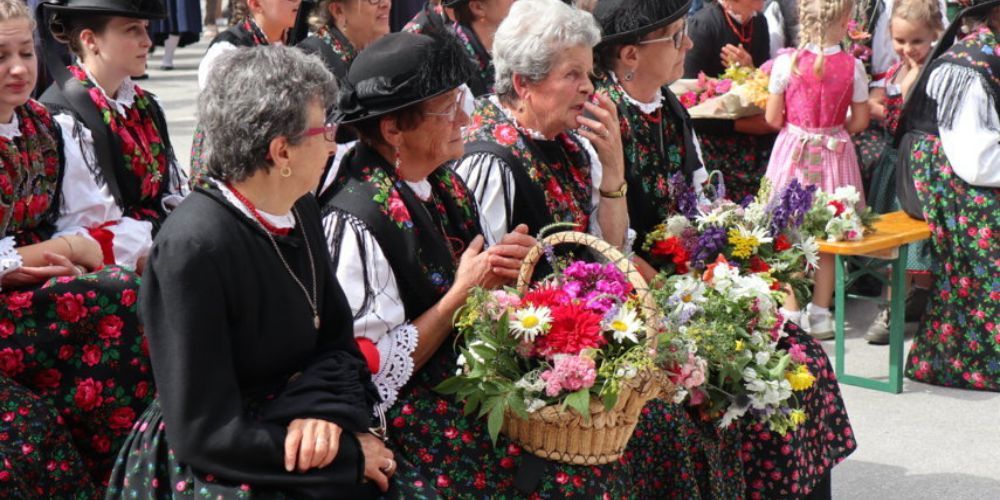
Every season, Arabba and the towns of the Fodom Valley are enlivened by cultural events and traditional festivals for all tastes.
There are many initiatives related to sport and nature, and in summer in particular there are cultural events linked to traditions and local cuisine, often with a focus on Ladin culture.
Open-air markets, parades, tastings of typical valley products and dishes, and traditional fairs dedicated to livestock and local crafts are just some of the events on the calendar of events scheduled in Arabba and the surrounding area!
How to reach Arabba
By car:
- From Belluno: continue towards Agordino until Alleghe, Caprile and then follow the signs for Livinallongo del Col di Lana/Arabba.
- From Padua, Treviso and Venice: take the A27 motorway and exit at Belluno. Continue towards Agordino until you reach Alleghe, Caprile and then follow the signs for Livinallongo del Col di Lana/Arabba.
- From Bolzano or Verona: take the A22 or the SS12 road to Karneid. At Ponte Gardena/Waidbruk, take the SS242 road and continue to Selva di Val Gardena. From here, take the SS48 road to Arabba.
- Those coming from the Brenner motorway should exit at Egna-Ora and then continue towards Val di Fassa, Val di Fiemme, Passo Pordoi and Arabba.
- From San Candido or Dobbiaco: take the SS49 for 4 km, continue on the SS51 and, once you reach Pierosa, take the SS48 to Arabba.
By train:
The nearest railway stations are:
Belluno - 70 km / Brunico - 50 km / Bolzano – 75 km
From Belluno station, there is a bus (Alleghe link) that takes you to Arabba. The service operates year-round. The train+bus option can be booked on the Trenitalia website and offers a discounted price.
By plane:
The nearest airports are:
- Bolzano - 77 km
- Innsbruck - 145 km
- Treviso ‘Antonio Canova’ - 150 km (travel time 2 hours and 40 minutes)
- Venice “Marco Polo” - 160 km (travel time 2h and 40min)
- Verona - 226 km
- Bergamo - 310 km
During the winter season, a private transfer service is available to/from Treviso and Venice airports to accommodation facilities in Arabba. Here you will find all the useful information about Arabba transfers.
What to visit in the surroundings of Arabba
The surroundings of Arabba are also rich in natural and cultural attractions that are not to be missed.
About an hour's drive away, we can visit Lake Fedaia, an alpine lake located at the foot of the Marmolada, between the municipalities of Rocca Pietore (Belluno) and Canazei (Trento).
This lake is perfect for a peaceful and relaxing day in the heart of the Dolomites. A pleasant walk allows you to go around the lake and admire splendid views, especially at sunrise and sunset, when the peaks of the Marmolada are tinged with pink.
Just over half an hour's drive away is the Val di Fassa with its picturesque villages, the peaks of the Trentino Dolomites and the fairytale Lake Carezza with its iridescent colours.
Finally, about an hour's drive away is Cortina D'Ampezzo, a tourist resort that will host the Winter Olympics.
Arabba and the Fodom Valley welcome you for a trip to remember and repeat!

About the author
Written on 11/09/2025


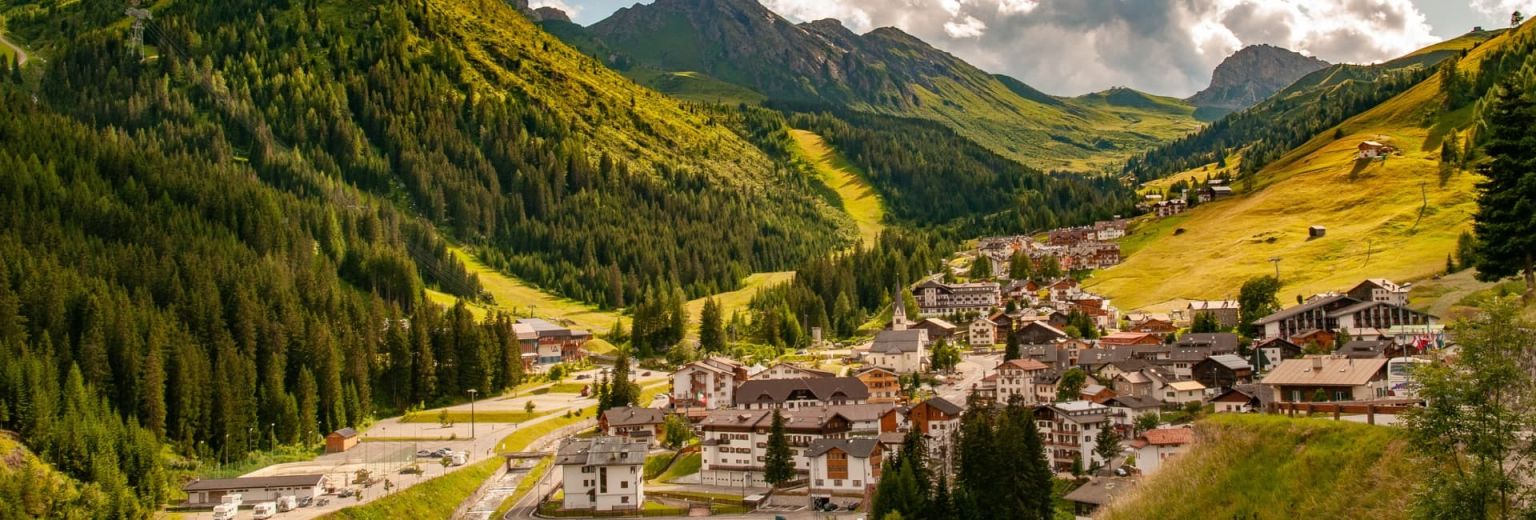


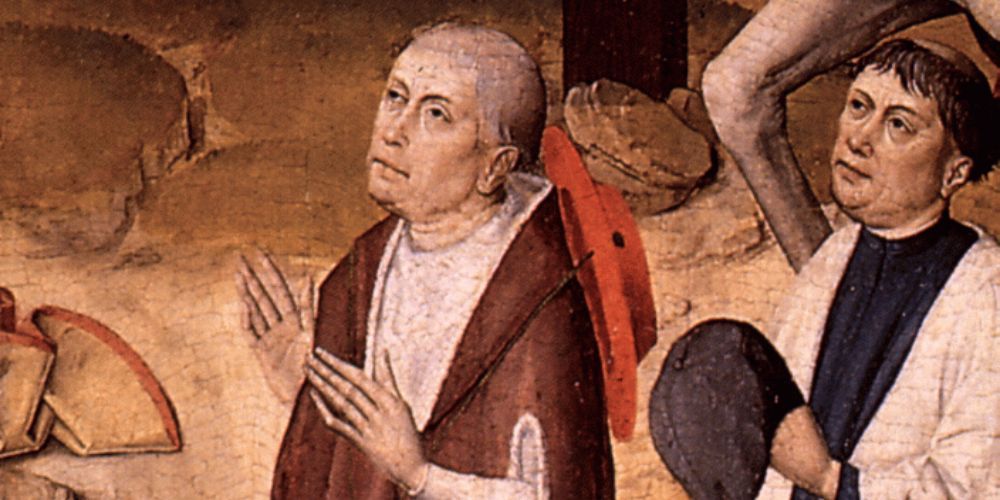
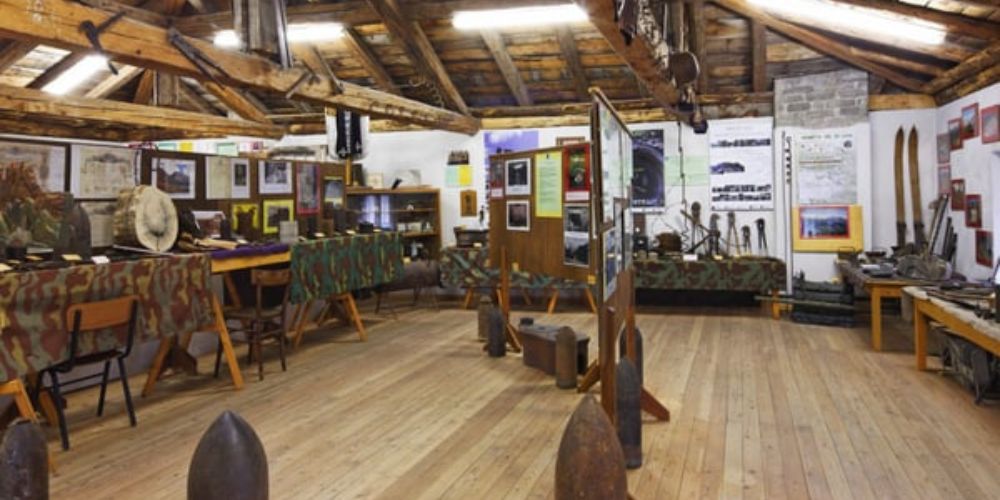



Ilaria Capatti
Discover Arabba, an alpine destination in the Venetian Dolomites. Nature, sport and culture in the Dolomites!